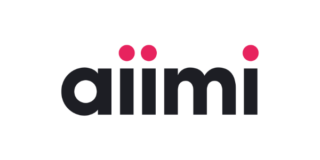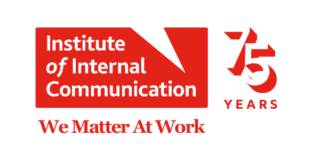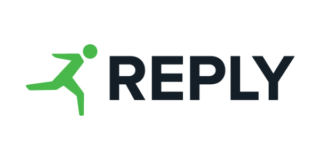
Perplexity Should Be Dead, But Instead, It’s Getting Stronger: Here’s Why

Google’s search engine dominance has long been seen as unassailable—a narrative shaped by decades of technological superiority, vast data collection, and an advertising model that has become the benchmark in digital marketing. For years, Google has systematically outpaced its competitors, from early search engines like Yahoo and Ask Jeeves to more recent challengers like Bing and DuckDuckGo. With its powerful algorithms, extensive resources, and a deeply entrenched user base, Google appeared invincible, a behemoth that no newcomer could realistically challenge. Yet, in this landscape, Perplexity AI—a relatively new entrant—has defied expectations by not only surviving but thriving.
The Historical Context: Google’s Unrivalled Dominance
To understand why Perplexity’s success is so noteworthy, it’s important to consider the extent of Google’s dominance in the search engine market. Since its inception in 1998, Google has systematically outperformed its competitors, continually refining its search algorithms to deliver increasingly accurate and relevant results. By the early 2000s, Google had already established itself as the leading search engine, a position it has only strengthened over time.
Google’s dominance is rooted in more than just superior technology. The company’s vast data collection capabilities have allowed it to refine its algorithms continuously, ensuring that its search results are not only relevant but also personalised. Additionally, Google’s advertising model, which leverages this data to deliver highly targeted ads, has generated enormous revenue—so much so that it now accounts for the majority of Google’s income. This financial clout has enabled Google to invest in further innovations, creating a seemingly insurmountable barrier to entry for new competitors.
Technological Shifts and Market Changes
However, the technological landscape has been shifting, opening new avenues for competition. The rise of artificial intelligence (AI) and machine learning has democratised access to powerful tools that were once the exclusive domain of tech giants like Google. Companies like OpenAI and Anthropic have developed large language models (LLMs) that can be accessed via APIs, enabling startups to build sophisticated AI-driven products without needing to develop the underlying technology from scratch.
This democratisation of AI has coincided with growing user dissatisfaction with Google’s search results, which have become increasingly cluttered with ads and SEO-driven content. Users are increasingly frustrated by the need to sift through multiple pages of results to find reliable information. This shift in user expectations has created an opening for new competitors who can offer a cleaner, more focused search experience.
Perplexity’s Unique Approach
Perplexity AI has capitalised on these shifts by adopting a user-centric approach that starkly contrasts with Google’s ad-heavy model. While Google’s search engine has become increasingly complex, with features that often prioritise advertisers over users, Perplexity has focused on delivering fast, accurate answers in a clean, ad-free environment. This emphasis on simplicity and efficiency has resonated with users who value speed and clarity in their search experiences.
Perplexity’s interface is designed to be minimalist and highly functional. When users enter a query, they are greeted with near-instantaneous responses, presented in a format that is easy to read and navigate. Unlike Google, which often requires users to click through multiple links to find the information they need, Perplexity provides concise, contextually relevant answers drawn from multiple sources. These answers are easily verifiable, with links to the original sources provided alongside the results.
Overcoming Challenges: Dependencies and Monetisation
Despite its success, Perplexity faces significant challenges, particularly regarding its dependencies on external LLMs from companies like OpenAI and Anthropic. While these partnerships have enabled Perplexity to deliver high-quality results without developing its own LLMs, they also pose a risk. If these companies were to revoke API access or introduce their own competing products, Perplexity’s core functionality could be jeopardised.
To mitigate this risk, Perplexity is actively working to reduce its reliance on external technologies. The company is developing its own search index and exploring the use of open-source models, such as those provided by Meta’s LLaMa 3. By building its own infrastructure, Perplexity aims to safeguard its future and ensure that it can continue to innovate independently. This strategic move not only enhances Perplexity’s resilience but also positions it to scale more effectively as it continues to grow.
However, scaling presents another challenge: monetisation. Google’s ad-driven revenue model is immensely profitable, allowing the company to offer its search engine for free while generating billions in income from advertisers. Perplexity, by contrast, has opted for a subscription-based model, which, while appealing to privacy-conscious users, is unlikely to generate revenue on the same scale as Google’s ad empire. Even with a growing user base, Perplexity’s subscription fees may not be sufficient to sustain long-term growth without additional revenue streams.
To address this, Perplexity may need to explore alternative monetisation strategies. One possibility is to introduce ads in a way that doesn’t compromise the user experience, perhaps by integrating them into the “related questions” section or other non-intrusive areas of the interface. Another avenue could be to expand its enterprise offerings, targeting businesses with products that offer enhanced privacy, security, and customisation features. By diversifying its revenue streams, Perplexity could strengthen its financial position and better compete with Google over the long term.
The Future: Can Perplexity Truly Challenge Google?
The big question remains: Can Perplexity truly challenge Google’s dominance in the search engine market? While it’s unlikely that Perplexity will displace Google as the leading search engine in the near future, it is already exerting pressure on Google to evolve. Google has responded to the rise of AI-driven competitors by introducing its own AI features, such as the Search Generative Experience, but whether these efforts will be enough to retain its user base remains to be seen.
Perplexity’s success thus far suggests that there is a demand for alternatives to Google—especially among users who are frustrated by the increasingly commercialised nature of Google’s search results. If Perplexity can continue to innovate, reduce its dependencies, and find sustainable ways to monetise its platform, it could carve out a significant niche in the search engine market.
While Perplexity may not yet pose an existential threat to Google, it represents a new wave of competition that Google cannot afford to ignore. By focusing on what users genuinely want—speed, simplicity, and privacy—Perplexity has shown that even the most dominant players can be challenged. The path forward will require careful navigation of technological dependencies and monetisation challenges, but if Perplexity succeeds, it could reshape the search engine landscape in ways that were once unimaginable.
















